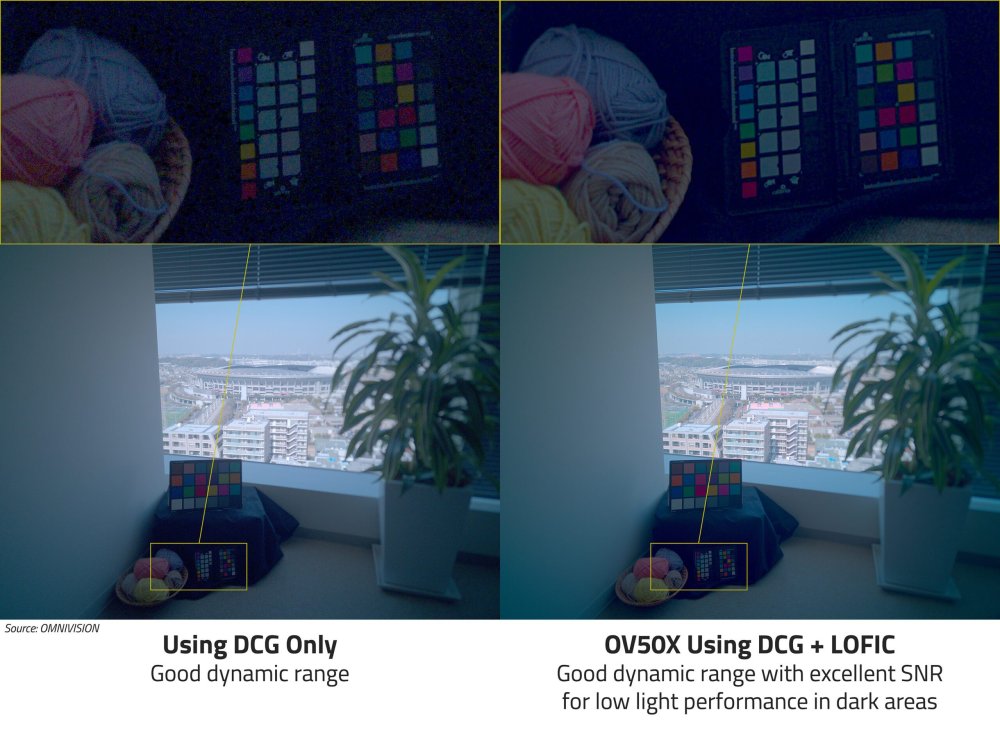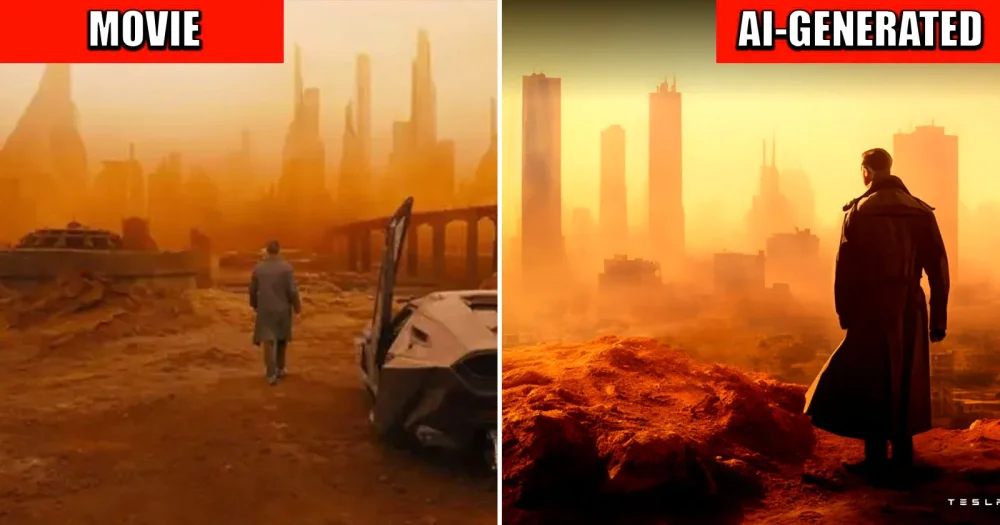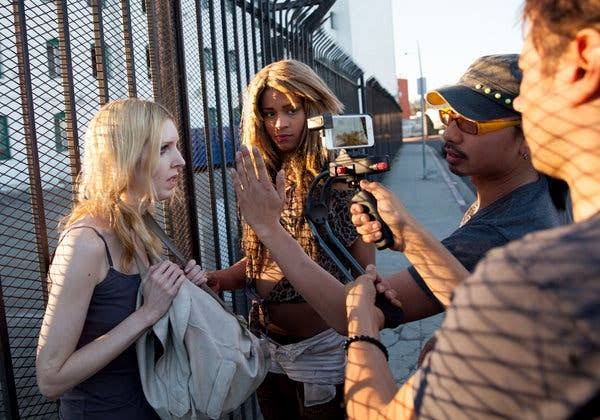-
Posts
2,538 -
Joined
-
Last visited
Content Type
Profiles
Forums
Articles
Posts posted by sanveer
-
-
Just curious ... should a sitting US president be openly influencing the fate of an entire industry, for his own or his family's personal gains? Will he push or influence regulators and law makers to cancel the business deals of everyone else? I read a report that a huge number of US Legislators own shares in Tech, Pharma, Defence Companies etc. But even by that standard, this seems to be much.
-
IMHO the biggest issues with the S1ii is that it wasn't badged as an S1Hii, with Netflix Approval, an added top control panel, and more unique design features (moving or multi angle EVF, 4inch LCD etc).
It seems everything about it is superior to the S1H, including dynamic range, exposure latitude (?), rolling shutter, weight etc.
-
On 11/11/2025 at 4:20 PM, Emanuel said:
Any extreme overheating is a deal breaker. At least to me. As happened with any of the previous mobile "prescriptions" released before by Android side (Android user here, as of now BTW).
Let alone MotionCam workflow (and reliability*!) so far... A true PITA (a 1/3 to 50% more expensive).
* dropped frames... (as usual as it goes) depending on variables such as CPU, hot balance under several and distinct shooting conditions... c'mon!
And I do NOT even mention broadcast compliance.
True. I suspect that a hardware hack could, possibly, improve thing.
Panasonic at one point used to make one of the best liquid metal thermal pastes on the planet. Probably if one of these phones can be opened and paste be applied and then the back has some contraption whereby the heat could dissipate on the outside (whether by wiring or by a metallic 3D Printer made back), then this may work wonders for heat management.
-
It seems that the 12-bit RAW on the Pixel 10 Pro absolutely smokes the IPhone 17 Pro. It has way more dynamic range, and the image can be pushed in post, just like a true RAW image. Though it suffers from overheating, if held for anything over short periods of time. I wonder if that can be improved with a firmware update or it would require a hardware change (cooling chamber etc).
-
-
-
-
The Greatest of them All, the My Rode Reel, was killed mysteriously, without any former warning. Those guys had made the festival superb. Wish they had a longer duration for the short films though (under 10 mins would be perfect).
P.S.: I noticed they've diversified from filmmaking to creator of the year awards. They've made a huge category for the prizes (
The awards span across 22 content categories:
Adventure and Outdoors, ASMR, Beauty, Comedy, DIY and Hobbies, Entertainment Review, Fashion, Food and Cooking, Gaming, Gear and Tech Reviews, Gym and Fitness, Health and Wellness, Home and Studio Tours, How-to and Tutorial, Interview, Journalism, Music Production and Performance, Science, Short Film and Documentary, Sports,bTravel and Lifestyle, Video Podcasts).
https://rode.com/en/about/news-info/introducing-the-rode-creator-of-the-year-awards-2024
-
Making Smartphones requires way more skills than making cameras. RED, the infamous patent thief tried and failed miserably with the Hydrogen One. Even Sony, who despite making the majority of Image Sensor for most industries, as well as some great displays, as as having a great gaming legacy, still isn't anywhere in the top 5-10 smartphones.
Smartphone imaging is not as much about glass as it's about Computational Photography.
Apple has created a brand image like nobody else. And the US government will ban any company, from any country, that even remotely poses a threat, regardless of whether it's the Democrats or the Republicans in power.
In my opinion, smartphone politics and success is way more complicated than Japanese Camera politics.
-
-
God knows how he gets the limitless millions that he does. Many of his videos have him handing out money more than most game shows and lotteries. It's almost he owns the federal reserve.
-
Ignore it. Panasonic has done this (move the charging to USB-C) with some other model too, less than a year ago. They probably thought that if they announced it, some more people would buy it.
Panasonic should consciously discard every remnant of the DFD circus. Otherwise their 8 year old cameras are also reasonably impressive
-
27 minutes ago, 92F said:
-
23 minutes ago, 92F said:
The CineD test simply shows the relationship between dynamics and the internal denoiser:
The GH7 tested in raw clearly shows that the significant or total absence of denoiser, reduces the dynamics because there is noise.
So if the G9Mkii, I also noticed, has a significantly better dynamics in testing, it is at the cost of smoothing.
Interesting. That's what most people said was the reason why the iPhone shows 12 stops of dynamic range (whereas the real dynamic range and thus exposure latitude would be much lesser).
-
This is amazing Andrew. Your B&W GH2 video was very surrealistic and the natural grain at high ISO on that camera is crazy.
Could you also compare the G9ii with the GH7? It apparently has slightly better dynamic range, and a tiny bit better rolling shutter too.
https://www.cined.com/camera-database/?camera=LUMIX-GH7
-
17 hours ago, Andrew Reid said:
Apparently Tesla marketing boffins fed Bladerunner 2049 stills into Grok to come up with the close likeness, which they then proceeded to use for marketing purposes at the unveiling of the Robotaxi.
What a world.
Should be an interesting case to watch to see what precedent is set for ai-generated movies and photography.
Can you really copyright a lighting style and colour grade?
Every AI is stolen work. I remember watching some asian film whose story was apparently written by AI, which turned out to be a Hindi film, released a few years before.
All major Corporations into AI, are using copyrighted and private work without explicit permissions, release and compensation. Starting with Google and Microsoft.
The question is how much similarity can quality as AI work, and how much would impinge upon the original. This colour scheme and grade hardly seems absolutely unique or never used in film before. Also people wearing coats or high rises in the background is also not really one of a kind.
Hollywood and Dems are just frustrated with Musk. This probably is just an excuse to try and take him to court. They'll go to any extent to sue, silence and cancel anyone on the opposite side.
-
On 10/31/2022 at 2:20 AM, androidlad said:
1. The pixel-level read node design is similar to IMX610, only the implementation is different and dictates that it has fast conventional read speeds.
2. The physical pixels are 49 megapixels and the entire sensor is natively designed to be 49 megapixels, reusing the 4.2um BSI pixel design and using both analogue binning and digital binning together to achieve a 12 megapixel sensor.
3. IMX510 disables the all-pixel readout mode, so there is no possibility of an all-pixel readout, and naturally it cannot achieve 2x2 OCL AF, which is the biggest difference between it and IMX472.
4. Dividing IMX510's logical pixel into four physical pixels. The readout is achieved using 1:2 analogue binning before PGA and digital binning after ADC. The specifics are:
A. 48 physical megapixels, divided into upper left, upper right, lower left and lower right in-group pixels.
B. 24 mega pixels are read, binned in the form of upper left + lower right, upper right + lower left, dual stream 14bit readout.
C. 2:1 pixel binning in the digital domain to generate 12 megapixels at 15bit, discard 1bit to 14bit output.
D. The readout speed is around 21ms, approximating 48fps; when the precision is reduced to 12bit, 96fps can be achieved.
E. The ADC does not have an 11bit mode, so it cannot achieve the faster 24M 11bit -> 12M 12bit.
F. The digital binning discards 1bit of precision regardless of the mode of output, a waste of performance deliberately designed into IMX510.
G. In one video mode, the internal readout of two 3.84K/128fps 12Bit ADC streams are digitally binned, but the resolution is not twice that of 3.84K. The precision and resolution are wasted.5. Due to the uniqueness of the readout mode, IMX510 cannot achieve any 2x1 OCL in-group AF, and the orthogonal readout pixel groups cannot be used for phase detection. Therefore the only phase focusing design for the IMX510 is masked PDAF. A focusing method using 2x2 OCL AF will only be available when the all-pixel readout mode is unlocked.
6. The hardware performance of the sensor goes well beyond the limitations of the "IMX510" name.
7. If this sensor were to be a normal Bayer sensor, the readout speed would depend only on the total number of analogue pixels before the ADC, due to the pixel readout design. Thus 48 megapixels at 24fps 14bit. For this a Modified Bayer CFA can be used, which is suitable for pixel designs with 2:1 analogue signal binning - maximising its performance and enabling dual mode switching between high resolution and oversampled high speed shooting:
Crop to 16:9 to achieve 8.5K/57.7fps 12bit, 2x4.35K/115.5fps 12bit respectively; crop slightly to 7.68K/64fps 12bit, 2x3.84K/128fps 12bit.
Notably, its 2x3.84K/128fps 12Bit readout truly has double the resolution and achieves IMX301-like oversampling performance (Sony F65RS).8. The readout speed of any column-parallel ADC design of an image sensor must be scaled by the line readout speed, by the total number of pixels multiplied by the number of columns, and at the same level of precision comparing:
A 48 megapixel 14bit 24fps sensor reads at a larger scale than a 12 megapixel 14bit 48fps sensor, but we cannot call it a greater total number of pixels read out, but rather a faster readout, measured by miliseconds.
At a given precision, readout time (the time taken to read a frame), readout scale (how many pixels are read in a second), and readout speed (how many rows of pixels can be read in a second by a column of ADCs), are three dintinctly different and important metrics.Very interesting ... Basically Sony shot itself in the foot with this sensor. Twice.
-
What a damp squib. They could have Totally avoided this ...
-
11 hours ago, IronFilm said:
Labour still costs the same, no matter if you're shooting on an iPhone or an ARRI 35
The Sound Dept for Tangerine was still using US$60K-ish or more of sound equipment, as you might expect on a low budget feature film.
Tangerine Budget = $100,000
This film's budget = $75,000,000
That is 750 TIMES the Budget
Are we really comparing budgets here
-
"However, Danny Boyle’s forthcoming zombie flick, 28 Years Later, was shot over the summer with a bunch of adapted iPhone 15s, WIRED has learned, making the Hollywood thriller, with its budget of $75 million, the biggest movie to date filmed with smartphones."
This is apart from the Insane Lenses Attached to the Camera, big budget additional gear, God knows what else etc.
Tangerine was a film actually shot on an iPhone woth attached lenses. But genuinely shot on it, with minimum extras.
This Danny Boyle film saying it's shot on an iPhone is just so ... dishonest
-
What's new in these cameras? Do they have newer sensors, or even PDAF? Why is Panasonic suddenly releasing these two cameras?
" ...Multiple IP Transmission Standards
..."
So basically the same cameras with slightly better connectivity?
-
-
Really sad.
-
What is the Sensor Size?
P.S.: I was being lazy about watching the two videos. It's a 1inch sensor.
-
Like I mentioned in one of the threads, Nikon was on the path of making THE SENSOR, about 3 years ago. Which, incidentally, happened to be a 1inch sensor. The only issue I can think if, with it, is, probably that its Only 18MP (17.84). Everything else is in the superlative for it, from dynamic range, ro frame rate.
(http://image-sensors-world.blogspot.com/2021/02/isscc-2021-nikon-1784mp-1000fps-sensor.html?m=1)
One advantage of a smaller sensor, is the insane form factor flexibility that it allows cameras to be made into, from the DJI Pocket 3, to Smartphone sized cameras (with even multiple cameras or collapsible zooms), or tiny Point and Shoots with great manual control.
Maybe someone can make a l16 Light type of Camera with multiple 1inch Sensors, but without attempting to fuse images. They could have multiple cameras with difference zoom ranges, with cameras whose angles can be changed, to be able to record wide and mid, and other angles, simultaneously.









Warner Bros - Netflix vs Trump and Larry Ellison
In: Cameras
Posted
It's really weird ...